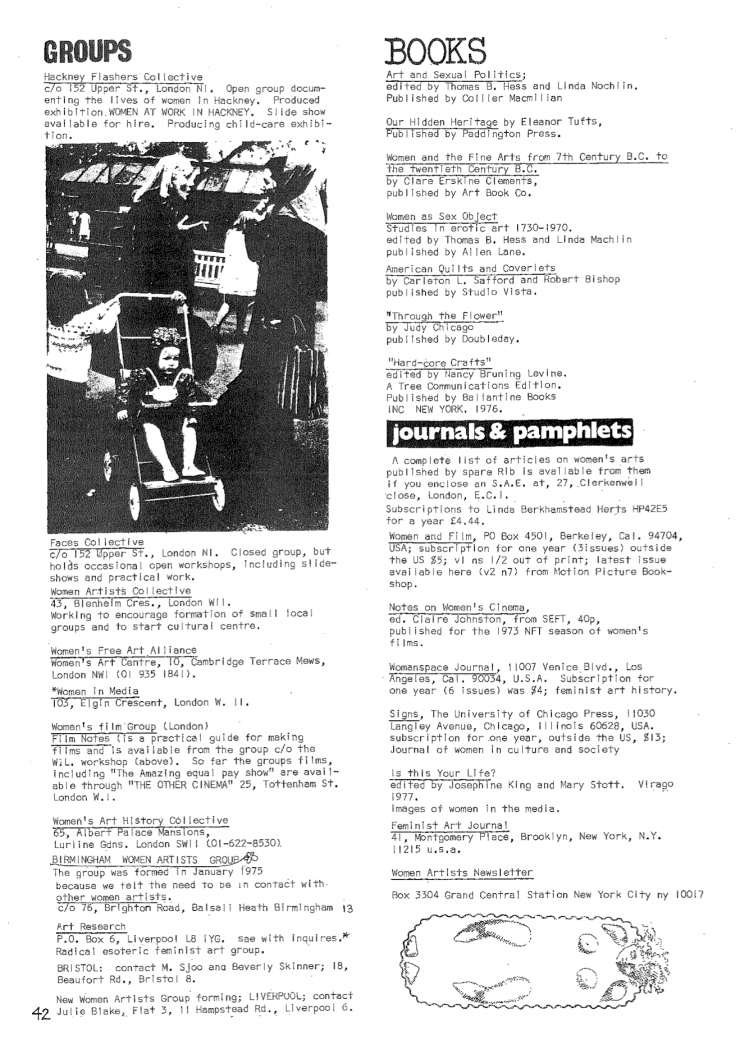‘Groups,’ a list of established feminist art groups, published in MAMA, 1978
My research uses the Women’s Art Library to look at the mobilisation of collectives, co-operatives and collaboration in feminist art in the UK. It explores the various iterations of group work and organising methods used through the Women’s Liberation Movement and how they manifested in feminist art practice throughout the seventies and eighties. The Women’s Art Library, itself a collaborative effort, also produces a psychically collective space in the archive that creates linkages with artists across temporal and geographical constraints, collapsing chronologies and topologies.
So far in my project, I have traced the beginnings of the Women Artist’s Slide Library to multiple groups and co-operative run spaces in London in the 1970s. The groups, such as those listed in MAMA, some informal gatherings of friends, some formal co-operatives that shared resources and spaces, all lay the ground work for the collective formation of the slide registry. The collection was also crowd sourced, taking submissions and relying memberships from artists to constitute the collection and sustain the operation of the slide library.
There are multiple collaborative methods at play here, that both align with and contradict the collective practices of the Women’s Liberation Movement. The foundation of which was small groups which were talking based (consciousness-raising) and/or organisation based (action groups). The slide library sought to raise consciousness about women’s art, women’s art history and the contemporary conditions women artists were practicing in. The actions to combat the problems they found in these areas through exhibition making and creating networks of women artists, curators, teachers and art historians.
A large component of my research is considering the ways in which these organising structures, learnt from the Women’s Liberation Movement, shaped the ways women artists worked. There are many examples of art co-operatives, collective run gallery and exhibition spaces and collaborative art works and exhibitions that evidence this. What I am interested in here are the deviations from the traditional modes of feminist organising to account for new activities that were important to artists.
Study groups, which included slide shows, conversations about women artists in history, discussing each others work, as well as action groups to organise exhibitions, publications and lobby art institutions, were loose ways to organise the intense activities of the feminist art movement. These are a type of organising that facilitated an intense period of cultural production that was public facing, culturally significant, and one that was conscious of producing a history. The slide library is an example of both the study and action group—a place to gather knowledge and produce a history of women’s creative practice in the UK, and to provide a resource on which future histories and practices could be built.
Lily Evans-Hill


Published by